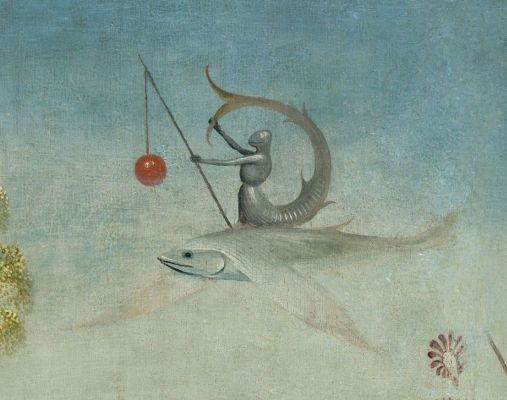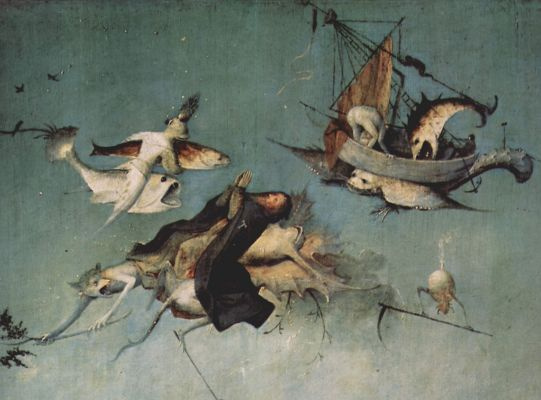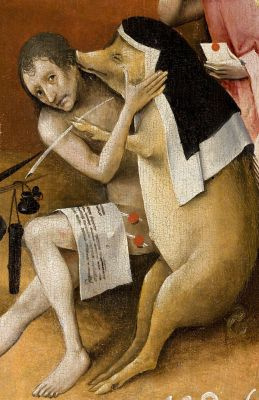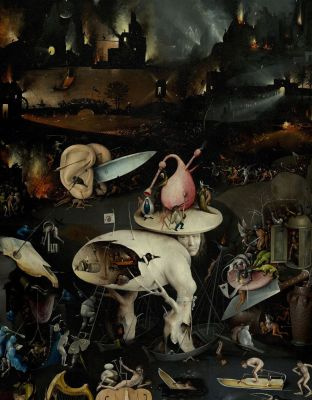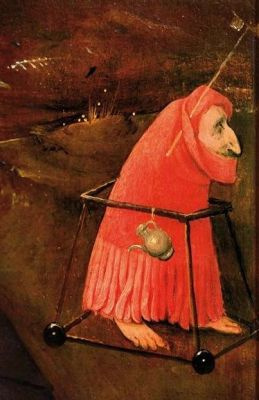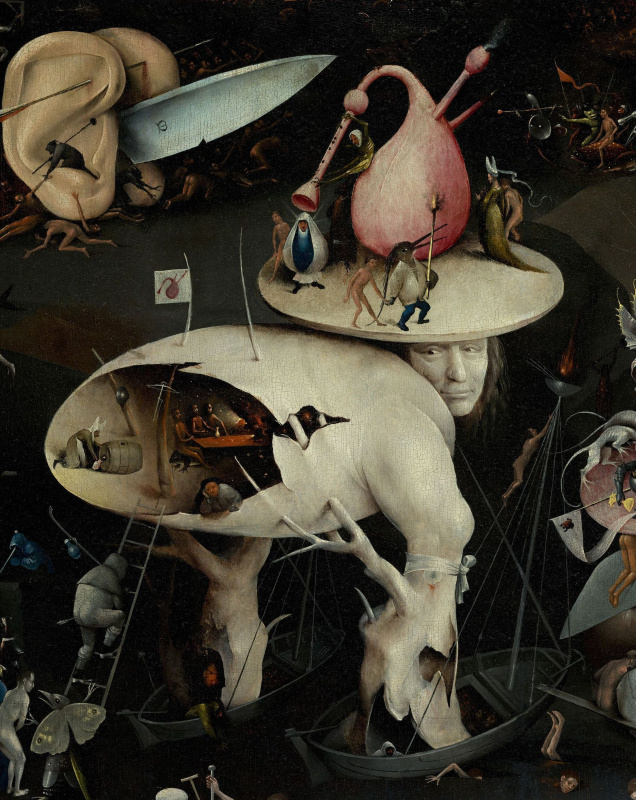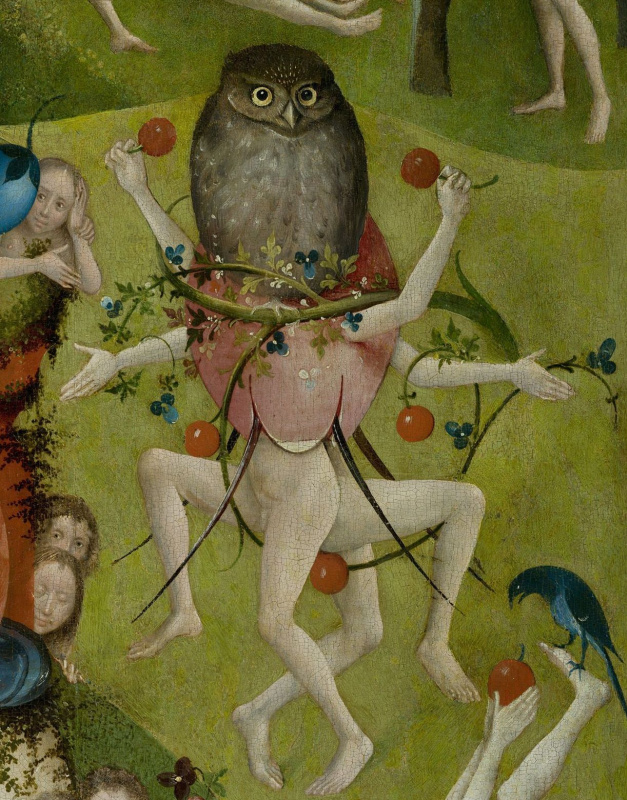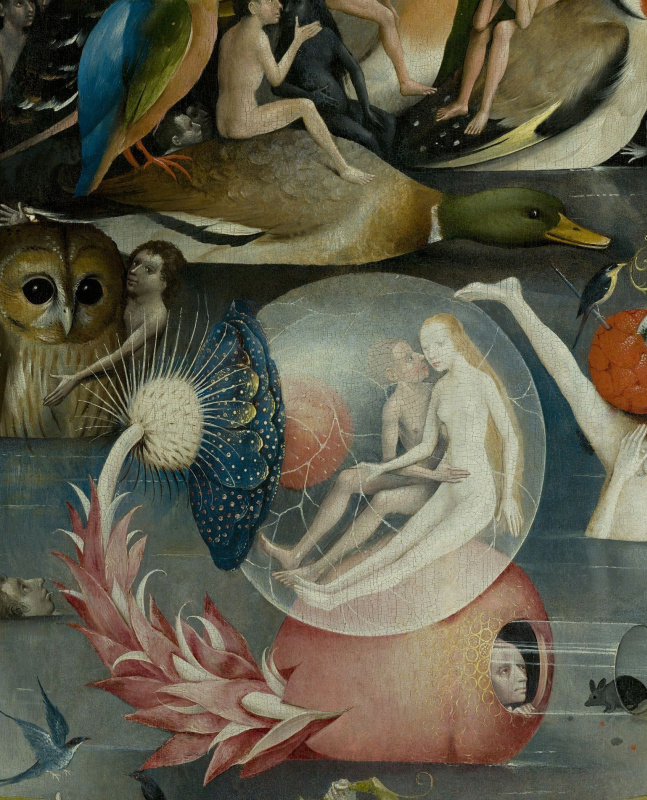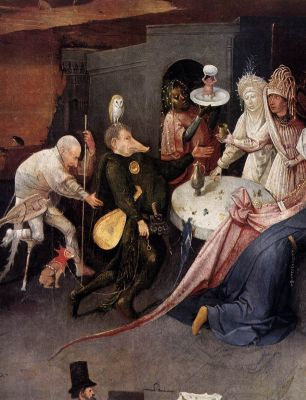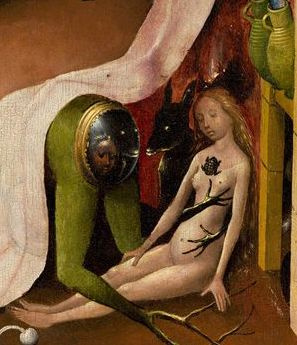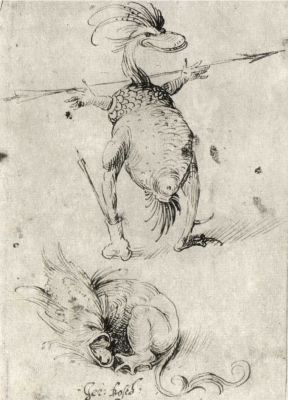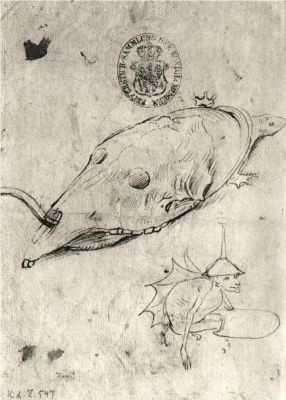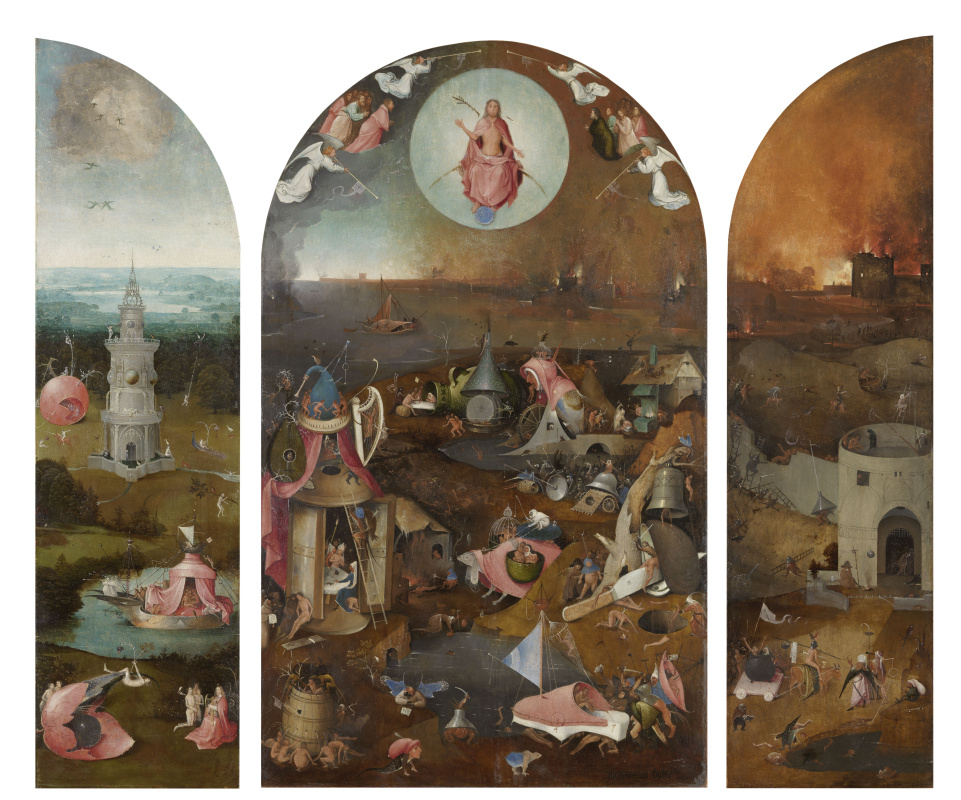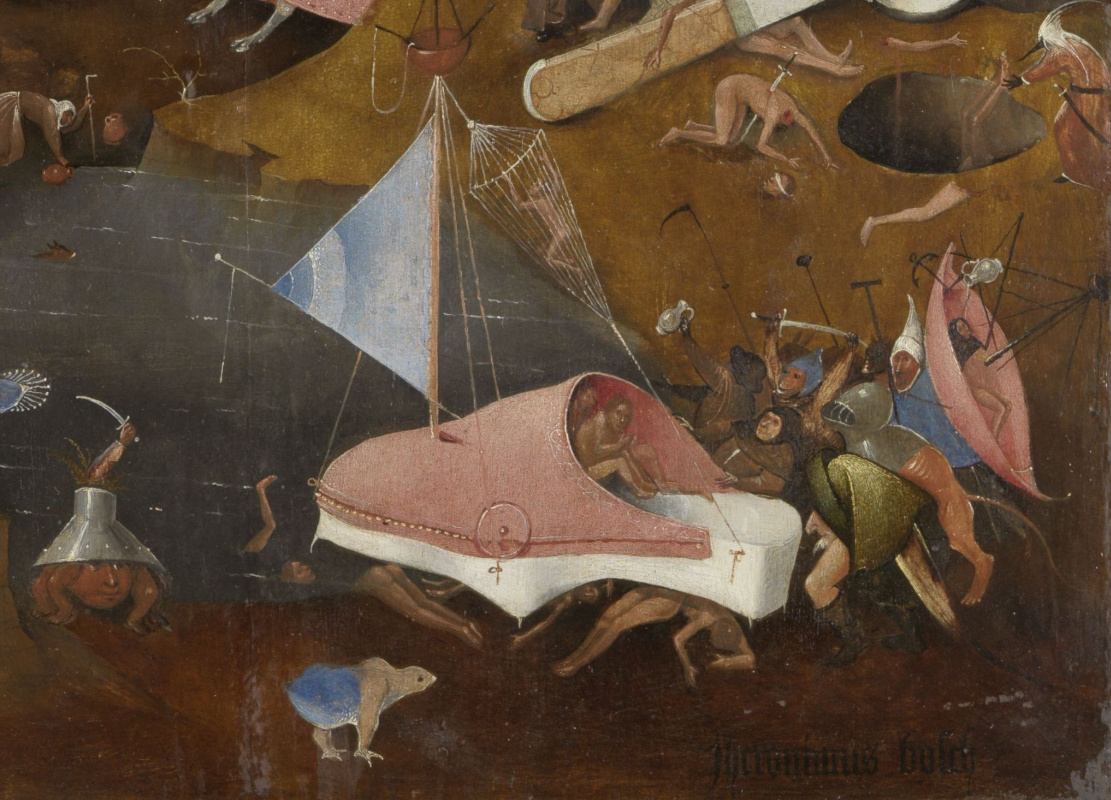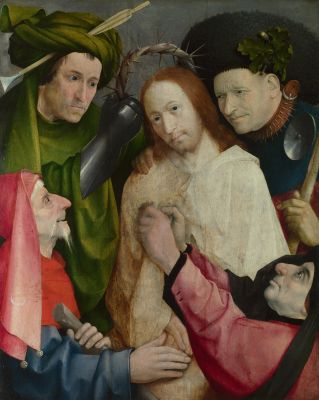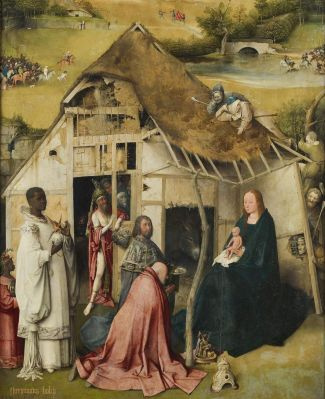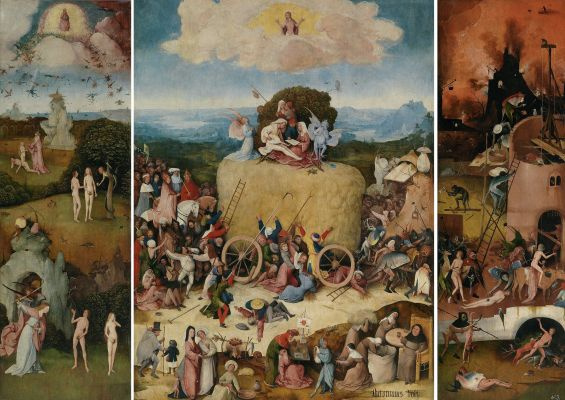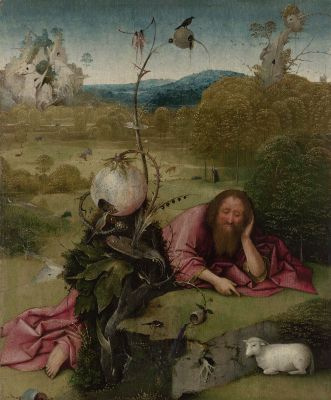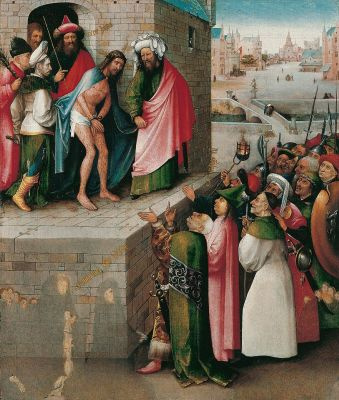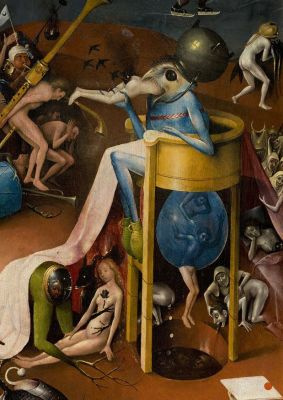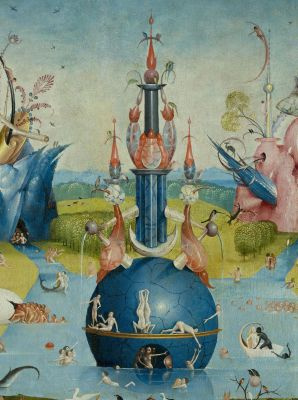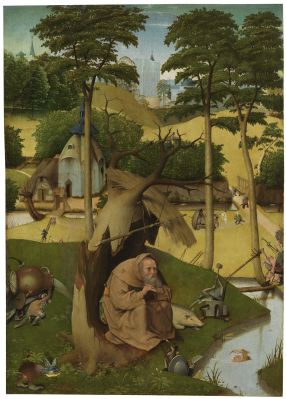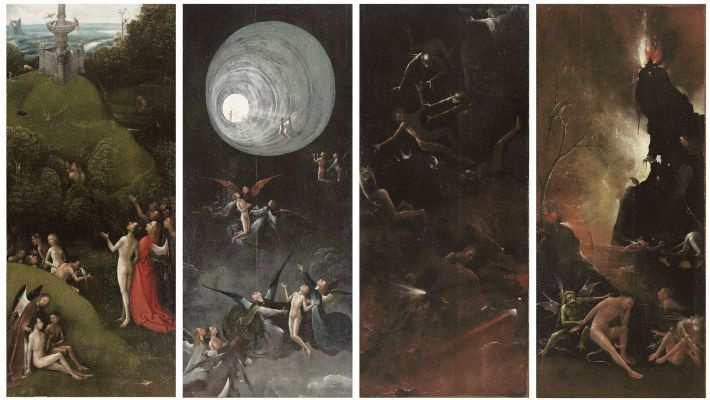Among the modern filmmakers we could find a lot of admirers of Caravaggio, Goya or Rembrandt. However, no artist affected the cinematographic picture of the world so effectively as Hieronymus Bosch, a horror maker of the Middle Ages, an honorable professor of nightmares, the artist whose successors have not been able to fiddle his heritage away for 500 years. Somebody borrows his motives, the other shares his idea, somebody follows his tracks being unaware of this. Arthive recollects the filmmakers who were inspired by Bosch’s oeuvre.

Terry Gilliam
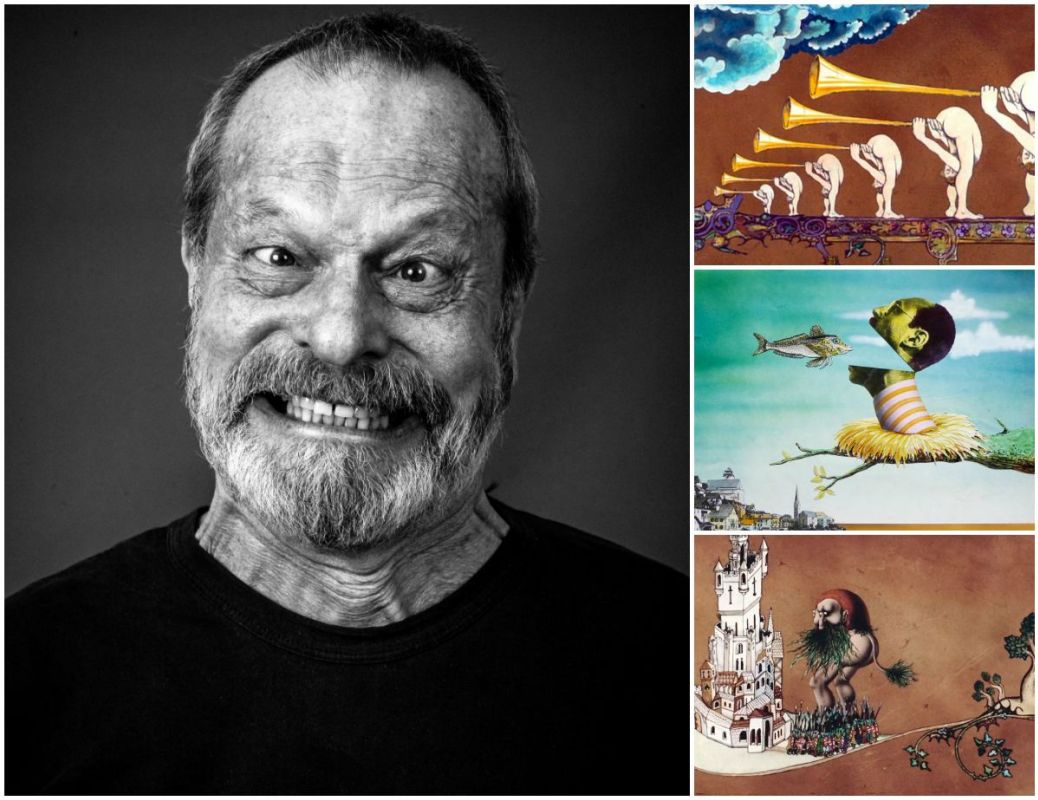
Terry Gilliam. Stills from the animated sketches to the TV show Monty Python.
Terry Gilliam, who has directed feature films, including 12 Monkeys, Brazil, Fear and Loathing in Las Vegas, a member of the comedy group Monty Python and so on, has very much in common with Hieronymus Bosch. We do not mention the hell he easily creates for his investors and producers when making his blockbusters. Terri Gilliam has been obsessed with Bosch for a long time. According to him, when he saw the triptych the Temptation of St. Anthony in Brussels (it likely comes to the replica) he suffered with the Stendhal syndrome, turned into the Pavlov’s dog in art and each time when the name of Hieronymus Bosch was mentioned he became extremely excited.
" If I have a visual style it’s incredibly eclectic. I’ve always been obsessed with viscera, guts of things whether they’re physical or mechanical; showing the inside of things, not just the surface of things. When it comes to ironic, or disturbing, or surreal images, I rush back to Bruegel, to Bosch, to Magritte, to Max Ernst, — said Terry Gilliam in his interview on Twelve Monkeys, — Goya is a favorite because he’s always been about the horrors of war. There’s terrible anguish in his stuff, but at the same time incredible humanity. I’m not fascinated by just the bizarre for the sake of the bizarre. There has to be a humanistic side, which Bruegel, Bosch, Goya all show. They can see the bizarre side. They can see the tragic and horrific side; yet there’s a sense of humor, and joy, and love of human beings".
The influence of Bosch we could clearly see in the movies by Gilliam, for instance, the scenes of the apocalyptic future in the Twelve Monkeys are obviously inspired by Bosch. It is the most visible in his animations for the Monty Python TY show. We can see here flying fish and funny nuns and the theme of trumpets is also in the manner typical to Bosch.
" If I have a visual style it’s incredibly eclectic. I’ve always been obsessed with viscera, guts of things whether they’re physical or mechanical; showing the inside of things, not just the surface of things. When it comes to ironic, or disturbing, or surreal images, I rush back to Bruegel, to Bosch, to Magritte, to Max Ernst, — said Terry Gilliam in his interview on Twelve Monkeys, — Goya is a favorite because he’s always been about the horrors of war. There’s terrible anguish in his stuff, but at the same time incredible humanity. I’m not fascinated by just the bizarre for the sake of the bizarre. There has to be a humanistic side, which Bruegel, Bosch, Goya all show. They can see the bizarre side. They can see the tragic and horrific side; yet there’s a sense of humor, and joy, and love of human beings".
The influence of Bosch we could clearly see in the movies by Gilliam, for instance, the scenes of the apocalyptic future in the Twelve Monkeys are obviously inspired by Bosch. It is the most visible in his animations for the Monty Python TY show. We can see here flying fish and funny nuns and the theme of trumpets is also in the manner typical to Bosch.
Christophe Gans
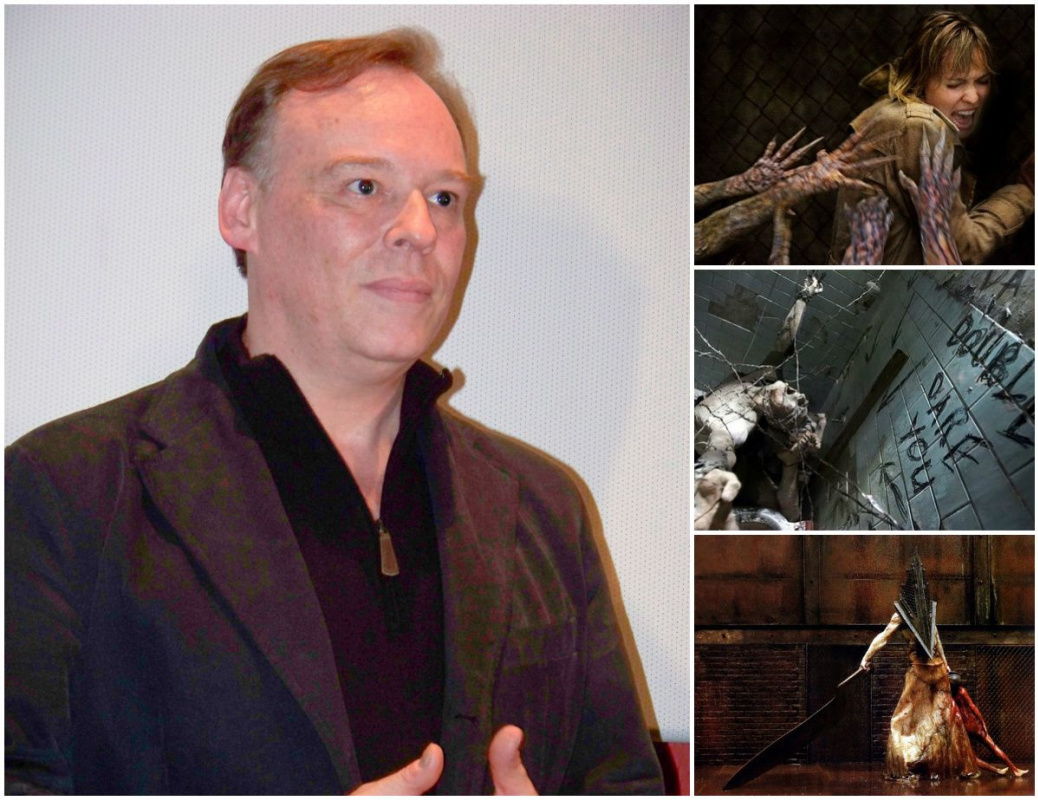
Christophe Gans. Footage from the movie the Silent Hill.
Christophe Gans, a French film director, producer and screenwriter is widely known due to his sequel to the cult computer game the Silent Hill. He managed to create a full screen version of the hell by Bosch. Sanguineous smoky horror of the Silent Hill is lavishly covered with ash and overloaded with the typical for Bosch symbols like crosses, keys and so on. The horrible Grim Reaper with a pyramid head is roaming over the town (we can not but mention different pyramids, cones and triangles favored by Bosch) and if you scrutinized the blade of his sword you would probably see the mark M so typical for Bosch. However, the most important is not the symbolism
but very close to Hieronymus Bosch idea that hell is inevitable for sinners and for those who think they are the righteous.
Though visually the Silent Hill is a compliment for another horror artist Francis Bacon, the careful viewer would easily understand where something is coming from.
It is a figurative way of speech only. In the Silent Hill as well as in the pictures by Bosch, something is coming from very unexpected places.
Though visually the Silent Hill is a compliment for another horror artist Francis Bacon, the careful viewer would easily understand where something is coming from.
It is a figurative way of speech only. In the Silent Hill as well as in the pictures by Bosch, something is coming from very unexpected places.
David Lynch

David Lynch. Footage from the Blue Velvet and Twin Peaks.
"It seems as if Norman Rockwell met Hieronymus Bosch", — told one of the sound producers of David Lynch describing the movie the Blue Velvet. A cozy American region with one story houses like in postcards and suddenly an infernal horror emerged from behind neat facades of the houses being its real nature. You could hardly confuse the footage by Lynch with some detail in the triptych by Bosch. The link between them lies in the depth and is difficult to be recognized from the first glance. It is no coincidence that the first scene of the Blue Velvet is a cut ear, the key image in the oeuvre of Bosch. At the same time 500 years ago Bosch was aware of that owls were not what people saw in them. So, summing up, David Lynch is the inheritor of Bosch. You can reach the Black wigwam in different ways.
Guillermo del Toro

Guillermo del Toro. Footage from the Pan’s Labyrinth and Hellboy II: The Golden Army.
First and foremost, passion for many figure compositions makes a Mexican film director, screenwriter, producer, and novelist Guillermo del Toro Gómez and Bosch kin. His movies like the artworks by Bosch are overpopulated. You can scrutinize them for years discovering on the background new faces, snouts, senses and subject nuances. They are also a little bit overloaded with tiaras, halos, horns and hooves. Guillermo del Toro like Bosch very often became a victim of challenging theories of viewers, for the best movie critics treat his Hellboy in the context of the Manichaean heresy and, for instance, the Pan’s Labyrinth is treated as a metaphor of the relations between a child and the world of religious restrictions.
We can not but mention that attitude towards the supernatural forces of both Bosch and del Toro is much the same like in the Middle Ages: different evil spirits for del Toro are as the same everyday routine as the Metro or social networks for us.
We can not but mention that attitude towards the supernatural forces of both Bosch and del Toro is much the same like in the Middle Ages: different evil spirits for del Toro are as the same everyday routine as the Metro or social networks for us.
George Lucas

George Lucas. Stills from the Star Wars
It is difficult to suspect George Lucas to be a devotee of the Medieval paintings. However, the creator of the Star Wars franchise claimed in one his his interviews that the artworks by Bosch inspired some of his characters especially extraterrestrial creatures (he mentioned Jabba the Hutt among them). No doubt, Bosch knew a lot abut giant frogs. Though, we cannot but mention that George Lucas is a stunning promoter. Creating the cult movie of the global scale he has to find a recognized source of inspiration and by no means it could be a Muppet Show. Besides, it could be something like a cultural indulgence for the fans of the saga. So, no one could rebuke them for their infantilism and ignorance.
Martin McDonagh

Martin McDonagh. Footage from the In Bruges.
José de Sigüenza, a monk, who lived in Spain in XVI century, wrote about the oeuvre by Bosch:"…the others try to paint man as he appears on the outside, while he alone had the audacity to paint him as he is on the inside..". Thus, in this context we could say that Englishman Martin McDonagh is his worthy successor: the Last Judgement exists in the hearts and minds of his characters.
Full length movie screen debut of McDonagh’s In Bruges was inspired by Bosch’s The Last Judgement; the film director wanted the Bosch’s echo to be reflected in each frame of his film. The movie includes a scene with a gangster who feeling his guilt scrutinizing the Last Judgement by Bosch (we cannot but mention the courage of the curators of the The Groeningemuseum in Bruges, Belgium, allowing Colin Farrell to such a respectful and recognized museum). In the movie we can hear one of the most resonant criticisms in the history of art (Everything is shit but this one I like) as well as the best treatment of the subject:
— Limbo is something in-between — the main character is summing up, — so, you are not a full shit though you do not make it to the top, as the Tottenham.
Full length movie screen debut of McDonagh’s In Bruges was inspired by Bosch’s The Last Judgement; the film director wanted the Bosch’s echo to be reflected in each frame of his film. The movie includes a scene with a gangster who feeling his guilt scrutinizing the Last Judgement by Bosch (we cannot but mention the courage of the curators of the The Groeningemuseum in Bruges, Belgium, allowing Colin Farrell to such a respectful and recognized museum). In the movie we can hear one of the most resonant criticisms in the history of art (Everything is shit but this one I like) as well as the best treatment of the subject:
— Limbo is something in-between — the main character is summing up, — so, you are not a full shit though you do not make it to the top, as the Tottenham.
Aleksei German

Aleksei German. Footage from the Hard to Be a God.
For the majority of our peers the artworks by Bosch are bizarre evidences of customs, habits and collective fears used to exist in the dark and mysterious Medieval times. It was different for Aleksei German: working at his last movie entitled Hard to be a God he would rather keep in mind Bruegel and Bosch than brothers Arkady and Boris Strugatsky. At the same time his movies describe our times. In his interview to Anthony Dolin, a movie critic, German told that Bruegel was a "mild" realist on the contrary to Bosch. And the Holland even of nowadays is the exaggerated and concentrated Medieval ages. "I had seen all of us. We had made a movie about all of us. Arkanar is the same villainy, the same prisons, the same Blacks and the same Grays. We have reached nothing: we have the same in XXI century as they had in XVI. The Terrans are far from being ideal".
M. Night Shyamalan

M. Night Shyamalan. Footage from the Sixth Sense, the Village and the Signs.
Some art scholars believe that Bosch produced his artworks not for the descendants edification but for fun of his customers. His pieces are densely populated puzzles where Bosch hid scriptures, folklore, astrological forecasts, satirical thoughts, etc. They were something like intellectual puzzles for noblemen being excited when solving them.
This theory could be applied to M. Night Shyamalan, a filmmaker of the Sixth Sense, the Village and the Signs, who seems to be a successor of Bosch creative ideas for his movies are both intriguing and horrifying for the audience.
This theory could be applied to M. Night Shyamalan, a filmmaker of the Sixth Sense, the Village and the Signs, who seems to be a successor of Bosch creative ideas for his movies are both intriguing and horrifying for the audience.
Samuel Bayer
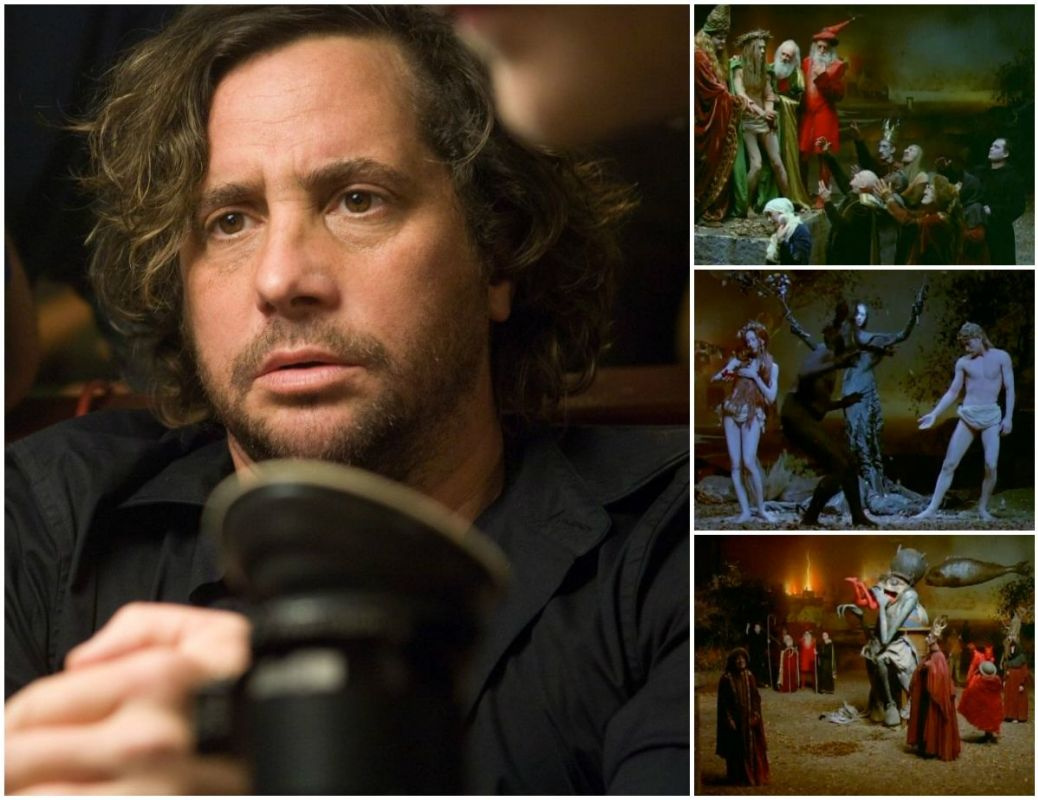
Samuel Bayer. Scenes from the music video Until it Sleeps by the Metallica
The only one full screen movie by American filmmaker Bayer is included into his filmography: a remake of A Nightmare on Elm Street, which is impossible to be compared with the authentic version of the movie about Freddy Krueger without mentioning the Medieval painting. However, the music video entitled Until it Sleeps Bayer shot for the Metallica heavy metal band is a clear homage to Bosch; for five minutes Bayer managed to cite the Garden of Earthly Delights, the Haywain by Bosch and attributed to the artist the Ecce Homo. Moreover, Bayer likes to add some significance and pathos to the contemptible pop art. Even his personal showcase of professional photos of nude models was entitled the Diptychs and Triptychs.
Valeriy Ugarov
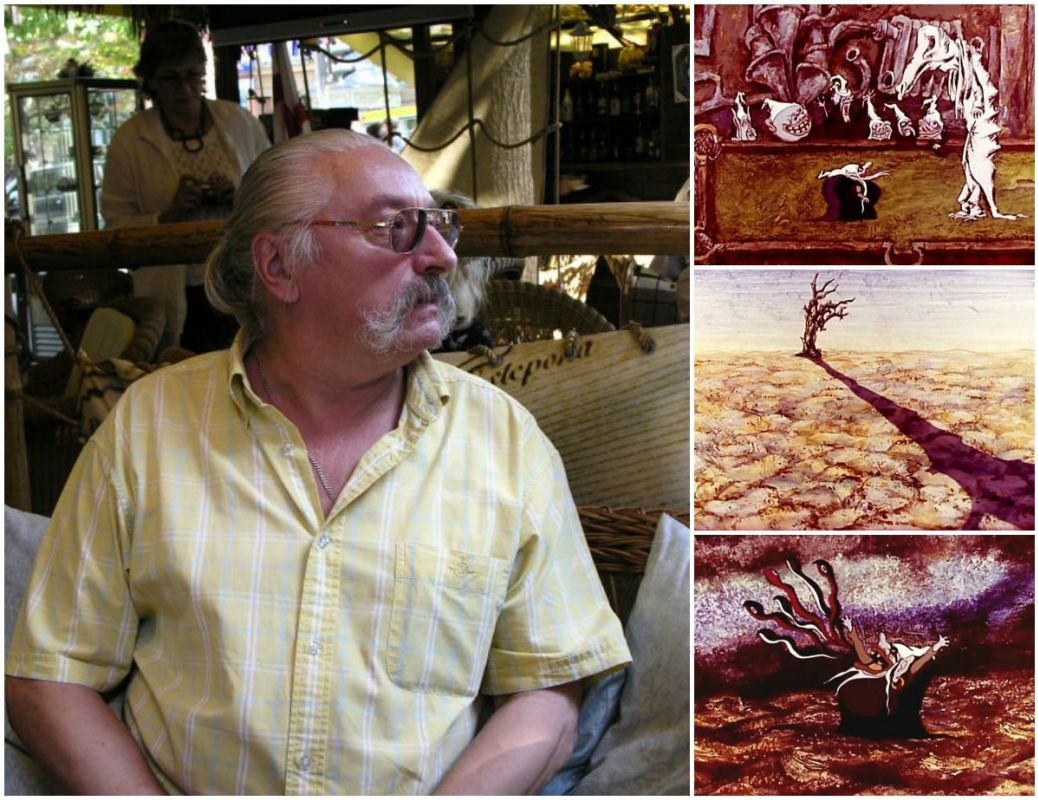
Valeriy Ugarov. Scenes from the animated cartoon Caliph Stork.
The list of animated cartoon artist Valeriy Ugarov’s works includes several series of the animated cartoon entitled the Joyful Merry-go-round and In the Back of the Classroom. The more surprising is that the animation of the fairy tale the Caliph Stork by Wilhelm Hauff very close to the Bosch whimsical oeuvre is also on the list.
Those who watched it in childhood would not be scared with the products like A Nightmare on Elm Street; the Caliph Stork does not imitate the artist’s artworks visually, though, it exploits the most horrible elements of the Bosch’s oeuvre. You can find there witches, magicians, alchemist, reptilians, beast-like freaks, a dried tree and darkness. But the most important is the motive of recompense for sins including curiosity, festivity and light-mindedness, so typical in the Middle Ages and for Bosch in particular. The main character got into trouble not because he befriended with a magician vivisectionist but due to his laugh.
The central illustration: Footage from M. Night Shyamalan’s movie the Signs and fragments from artworks by Bosch (1, 2, 3, 4).
The author: Andrei Zimoglyadov
Those who watched it in childhood would not be scared with the products like A Nightmare on Elm Street; the Caliph Stork does not imitate the artist’s artworks visually, though, it exploits the most horrible elements of the Bosch’s oeuvre. You can find there witches, magicians, alchemist, reptilians, beast-like freaks, a dried tree and darkness. But the most important is the motive of recompense for sins including curiosity, festivity and light-mindedness, so typical in the Middle Ages and for Bosch in particular. The main character got into trouble not because he befriended with a magician vivisectionist but due to his laugh.
The central illustration: Footage from M. Night Shyamalan’s movie the Signs and fragments from artworks by Bosch (1, 2, 3, 4).
The author: Andrei Zimoglyadov







